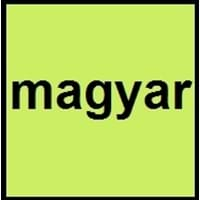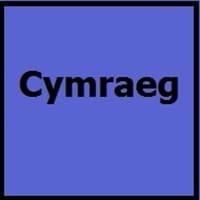Hungarian and Welsh
Countries
European Union, Hungary, Serbia, Vojvodina, Serbia
Wales
National Language
Austria, Gambia, Hungary, Romania, Serbia, Slovakia, Slovenia, Ukraine
Wales
Second Language
United States of America
Not spoken in any of the countries
Speaking Continents
Africa, Europe
Europe
Minority Language
Austria, Croatia, Romania, Slovakia, Slovenia, Ukraine
Argentina, United Kingdom
Regulated By
known, Research Institute for Linguistics of the Hungarian Academy of Sciences (Magyar Tudományos Akadémia Nyelvtudományi Intézete)
Welsh Language Commissioner
Interesting Facts
- Hungarian language has only preserved most of its ancient elements.
- 'Magyar' is the Hungarian name for the language, the 'Magyar' is also used as an English word to refer to Hungarian people.
- One of the Celtic language still spoken with great numbers of speakers is Welsh language.
- Welsh was evolved from British , which was spoken by ancient Britons.
Similar To
Mansi and Khanty Languages
English Language
Derived From
East and South Slavic Languages
British Language
Alphabets in
Hungarian-alphabets.jpg#200
Welsh-Alphabets.jpg#200
Writing Direction
Left-To-Right, Horizontal
Not Available
Thank You
köszönöm
Diolch
How Are You?
Hogy vagy?
Sut ydych chi?
Good Night
Jó Éjszakát
Nos da
Good Evening
jó Estét
Noswaith dda
Good Afternoon
Jó Napot Kívánok
P'nawn da
Good Morning
jó Reggelt
Bore da
Please
Kérlek
os gwelwch yn dda
Sorry
bocsi
Mae'n ddrwg gennym
I Love You
Szeretlek
Dw i'n dy garu di
Excuse Me
elnézést
Esgusodwch fi
Dialect 1
Csángó
Patagonian Welsh
Where They Speak
Bacău County, Rumania
Argentina
How Many People Speak
Not Available
Dialect 2
Oberwart
Y Wyndodeg
Where They Speak
Austria
Gwynedd
Dialect 3
Székely
Y Bowyseg
Where They Speak
Székely Land
Powys
Speaking Population
Not Available
Second Language Speakers
Not Available
Native Name
magyar / magyar nyelv
Cymraeg / Y Gymraeg
Alternative Names
Magyar
Cymraeg
French Name
hongrois
gallois
German Name
Ungarisch
Kymrisch
Pronunciation
[ˈmɒɟɒr]
[kəmˈrɑːɨɡ]
Ethnicity
Hungarians
Welsh people
Origin
1192 AD
9th Century
Language Family
Uralic Family
Indo-European Family
Subgroup
Finno-Ugric
Celtic
Early Forms
Old Hungarian
Common Brittonic, Old Welsh, Middle Welsh
Standard Forms
Modern Hungarian
Welsh
Language Position
Not Available
Signed Forms
Not Available
Not Available
Scope
Individual
Individual
ISO 639 6
Not Available
Not Available
Glottocode
hung1274
wels1247
Language Type
Living
Historical
Language Linguistic Typology
Subject-Object-Verb
Verb-Subject-Object
Language Morphological Typology
Agglutinative, Synthetic
Fusional
All Hungarian and Welsh Dialects
Most languages have dialects where each dialect differ from other dialect with respect to grammar and vocabulary. Here you will get to know all Hungarian and Welsh dialects. Various dialects of Hungarian and Welsh language differ in their pronunciations and words. Dialects of Hungarian are spoken in different Hungarian Speaking Countries whereas Welsh Dialects are spoken in different Welsh speaking countries. Also the number of people speaking Hungarian vs Welsh Dialects varies from few thousands to many millions. Some of the Hungarian dialects include: Csángó, Oberwart. Welsh dialects include: Patagonian Welsh , Y Wyndodeg. Also learn about dialects in South American Languages and North American Languages.
Hungarian and Welsh Speaking population
Hungarian and Welsh speaking population is one of the factors based on which Hungarian and Welsh languages can be compared. The total count of Hungarian and Welsh Speaking population in percentage is also given. The percentage of people speaking Hungarian language is 0.19 % whereas the percentage of people speaking Welsh language is Not Available. When we compare the speaking population of any two languages we get to know which of two languages is more popular. Find more details about how many people speak Hungarian and Welsh on Hungarian vs Welsh where you will get native speakers, speaking population in percentage and native names.
Hungarian and Welsh Language Codes
Hungarian and Welsh language codes are used in those applications where using language names are tedious. Hungarian and Welsh Language Codes include all the international language codes, glottocodes and linguasphere.





